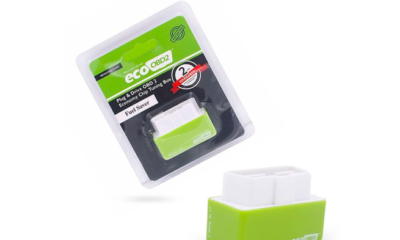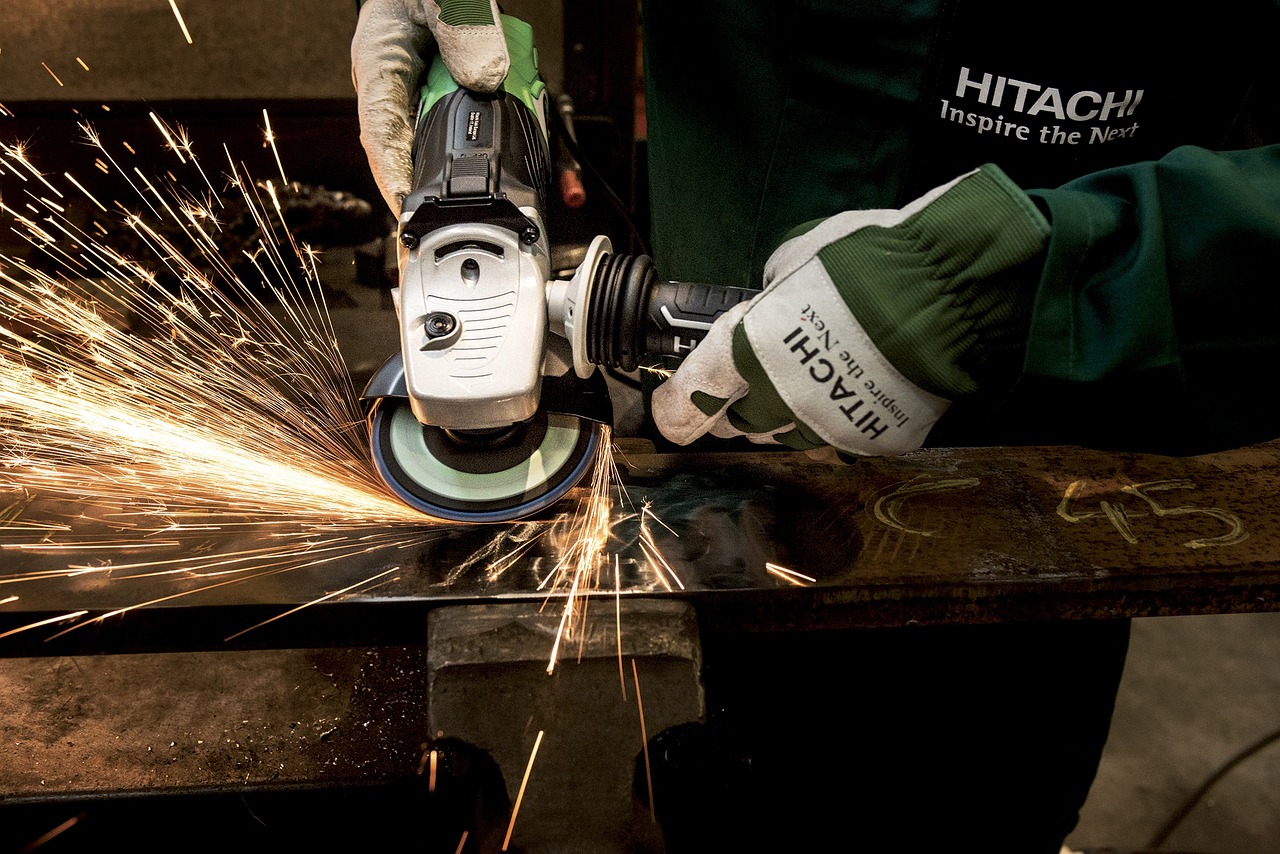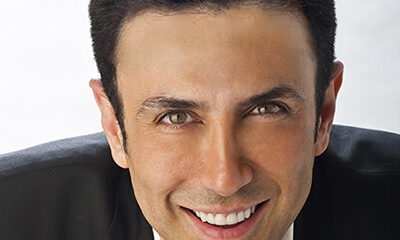Business
Illuminating Streets and Hearts: Tysen Knight’s Artistry of Hope

In the modern tapestry of artistic expression, street art has emerged as a vibrant and powerful medium. It decorates public spaces, breathing life into walls, sidewalks, and buildings, often conveying profound messages with its vivid designs. Despite its controversial origins, street art has captured the imagination of people worldwide, transcending boundaries and resonating with diverse audiences. Among the luminaries of this realm stands Tysen Knight, whose art radiates hope and positivity, transcending mere aesthetics.
Tysen Knight has become a recognizable figure in the world of street art, his captivating works adorning the landscapes of the valley. With creations that have captured the hearts of both local communities and international art enthusiasts, his artistry knows no bounds, showcased in public spaces and exclusive collections across the globe.
Drawing from influences as diverse as Buddha’s teachings and the effervescent spirit of pop art, Knight’s creations are imbued with the essence of street art icons like Jean-Michel Basquiat and Keith Haring, as well as the timeless brilliance of Pablo Picasso and pop culture icon Andy Warhol. A true polymath, Knight’s talents extend beyond street art, embracing the realms of muralist, filmmaker, and artist.
Among his crowning achievements is the celebrated documentary, “The Art of Hustle: Street Art Documentary.” This transformative piece marked a pivotal juncture in his career, propelling him from a street artist to a gallery contributor. Garnering recognition in the form of the “Best Feature Film” award at the Oregon Documentary Film Festival in 2018, the documentary artfully encapsulates not only Knight’s artistic prowess but also his journey of tenacity and dedication.
Knight’s artistic zeal is as much a community endeavour as a personal one. Initiatives like the “Street Bench Art Pilot” exemplify his dedication to engaging with the local populace. By adorning downtown Palm Springs benches with visually arresting designs, he has melded his unique artistic vision with the city’s vibrant fabric. These creations, adorned with figures like Garland, Warhol, Basquiat, Haring, Kahlo, and Lucille Ball, offer a tapestry of the street art world’s diverse and dynamic essence.
His “Masterpiece Mash-Up Series” showcases Knight’s ingenious reimagining of works by esteemed artists such as Pablo Picasso, Leonardo Da Vinci, and Grant Wood. The series debuted in the heart of New York City’s Times Square, earning acclaim from both connoisseurs and critics.
Yet, beyond accolades, Knight’s art has a heart. He is a philanthropist at his core, collaborating with organizations like Habitat for Humanity and the Midnight Mission. By constructing homes for the underprivileged and providing meals for the homeless, he transforms his art into an instrument of change, crafting hope from the very spaces he embellishes.
As the Artist Educator-in-Residence at the Palm Springs Art Museum, Knight’s legacy is one of mentorship and inspiration. Through his guidance, aspiring artists are empowered to forge their creative paths, echoing his indelible mark on the institution.
Knight’s influence doesn’t end with his artistic endeavours; it extends into education. The Tysen Knight Scholarship Fund, initiated by him, empowers high school students with a passion for the arts. By offering financial support, he ensures that artistic dreams aren’t constrained by financial limitations.
Tysen Knight’s journey is an ode to the transformative power of street art. Through his vibrant creations, he rejuvenates communities, imparts inspiration to individuals, and becomes a beacon of hope for emerging artists. His artistic mastery and unwavering commitment continue to enrich the world of street art, leaving an enduring imprint on the hearts and minds of many.
Business
High Volume, High Value: The Business Logic Behind Black Banx’s Growth

In fintech, success no longer hinges on legacy prestige or brick-and-mortar branches—it’s about speed, scale, and precision. Black Banx, under the leadership of founder and CEO Michael Gastauer, has exemplified this model, turning its high-volume approach into high-value results.
The company’s Q1 2025 performance tells the story: $1.6 billion in pre-tax profit, $4.3 billion in revenue, and 9 million new customers added, bringing its total customer base to 78 million across 180+ countries.
But behind the numbers lies a carefully calibrated business model built for exponential growth. Here’s how Black Banx’s strategy of scale is redefining what profitable banking looks like in the digital age.
Scaling at Speed: Why Volume Matters
Unlike traditional banks, which often focus on deepening relationships with a limited set of customers, Black Banx thrives on breadth and transactional frequency. Its digital infrastructure supports onboarding millions of users instantly, with zero physical presence required. Customers can open accounts within minutes and transact across 28 fiat currencies and 2 cryptocurrencies (Bitcoin and Ethereum) from anywhere in the world.
Each customer interaction—whether it’s a cross-border transfer, crypto exchange, or FX transaction—feeds directly into Black Banx’s revenue engine. At scale, these micro-interactions yield macro results.
Real-Time, Global Payments at the Core
One of Black Banx’s most powerful value propositions is real-time cross-border payments. By enabling instant fund transfers across currencies and countries, the platform removes the frictions associated with SWIFT-based systems and legacy banking networks.
This service, used by individuals and businesses alike, generates:
- Volume-based revenue from transaction fees
- Exchange spreads on currency conversion
- Premium service income from business clients managing international payroll or vendor payments
With operations in underserved regions like Africa, South Asia, and Latin America, Black Banx is not only increasing volume—it’s tapping into fast-growing financial ecosystems overlooked by legacy banks.
The Flywheel Effect of Crypto Integration
Crypto capabilities have added another dimension to the company’s high-volume model. As of Q1 2025, 20% of all Black Banx transactions involved cryptocurrency, including:
- Crypto-to-fiat and fiat-to-crypto exchanges
- Crypto deposits and withdrawals
- Payments using Bitcoin or Ethereum
The crypto integration attracts both retail users and blockchain-native businesses, enabling them to:
- Access traditional banking rails
- Convert assets seamlessly
- Operate with lower transaction fees than those found in standard financial systems
By being one of the few regulated platforms offering full banking and crypto support, Black Banx is monetizing the convergence of two financial worlds.
Optimized for Operational Efficiency
High volume is only profitable when costs are contained—and Black Banx has engineered its operations to be lean from day one. With a cost-to-income ratio of just 63% in Q1 2025, it operates significantly more efficiently than most global banks.
Key enablers of this cost efficiency include:
- AI-driven compliance and customer support
- Cloud-native architecture
- Automated onboarding and KYC processes
- Digital-only servicing without expensive physical infrastructure
The outcome is a platform that not only scales, but does so without sacrificing margin—each new customer contributes to profit rather than diluting it.
Business Clients: The Value Multiplier
While Black Banx’s massive customer base is largely consumer-driven, its business clients are high-value accelerators. From SMEs and startups to crypto firms and global freelancers, businesses use Black Banx for:
- International transactions
- Multi-currency payroll
- Crypto-fiat settlements
- Supplier payments and invoicing
These clients tend to:
- Transact more frequently
- Use a broader range of services
- Generate significantly higher revenue per user
Moreover, Black Banx’s API integrations and tailored enterprise solutions lock in these clients for the long term, reinforcing predictable and scalable growth.
Monetizing the Ecosystem, Not Just the Account
The genius of Black Banx’s model is that it monetizes not just accounts, but entire customer journeys. A user might:
- Onboard in minutes
- Deposit funds from a crypto wallet
- Exchange currencies
- Pay an overseas vendor
- Withdraw to a local bank account
Each of these actions touches a different monetization lever—FX spread, transaction fee, crypto conversion, or premium service charge. With 78 million customers doing variations of this at global scale, the cumulative financial impact becomes immense.
Strategic Expansion, Not Blind Growth
Unlike many fintechs that chase customer acquisition without a clear monetization path, Black Banx aligns its growth with strategic market opportunities. Its expansion into underbanked and high-demand markets ensures that:
- Customer acquisition costs stay low
- Services meet genuine needs (e.g., cross-border income, crypto access)
- Revenue per user grows over time
It’s not just about acquiring more customers—it’s about acquiring the right customers, in the right markets, with the right needs.
The Future Belongs to Scalable Banking
Black Banx’s ability to transform high-volume engagement into high-value profitability is more than just a fintech success—it’s a signal of what the future of banking looks like. In a world where agility, efficiency, and inclusion define competitive advantage, Black Banx has created a blueprint for digital banking dominance.
With $1.6 billion in quarterly profit, nearly 80 million users, and services that span the globe and the blockchain, the company is no longer just scaling—it’s compounding. Each new user, each transaction, and each feature builds upon the last.
This is not the story of a bank growing.
This is the story of a bank accelerating.
-

 Tech4 years ago
Tech4 years agoEffuel Reviews (2021) – Effuel ECO OBD2 Saves Fuel, and Reduce Gas Cost? Effuel Customer Reviews
-

 Tech6 years ago
Tech6 years agoBosch Power Tools India Launches ‘Cordless Matlab Bosch’ Campaign to Demonstrate the Power of Cordless
-

 Lifestyle6 years ago
Lifestyle6 years agoCatholic Cases App brings Church’s Moral Teachings to Androids and iPhones
-

 Lifestyle4 years ago
Lifestyle4 years agoEast Side Hype x Billionaire Boys Club. Hottest New Streetwear Releases in Utah.
-

 Tech7 years ago
Tech7 years agoCloud Buyers & Investors to Profit in the Future
-

 Lifestyle5 years ago
Lifestyle5 years agoThe Midas of Cosmetic Dermatology: Dr. Simon Ourian
-

 Health6 years ago
Health6 years agoCBDistillery Review: Is it a scam?
-

 Entertainment6 years ago
Entertainment6 years agoAvengers Endgame now Available on 123Movies for Download & Streaming for Free
